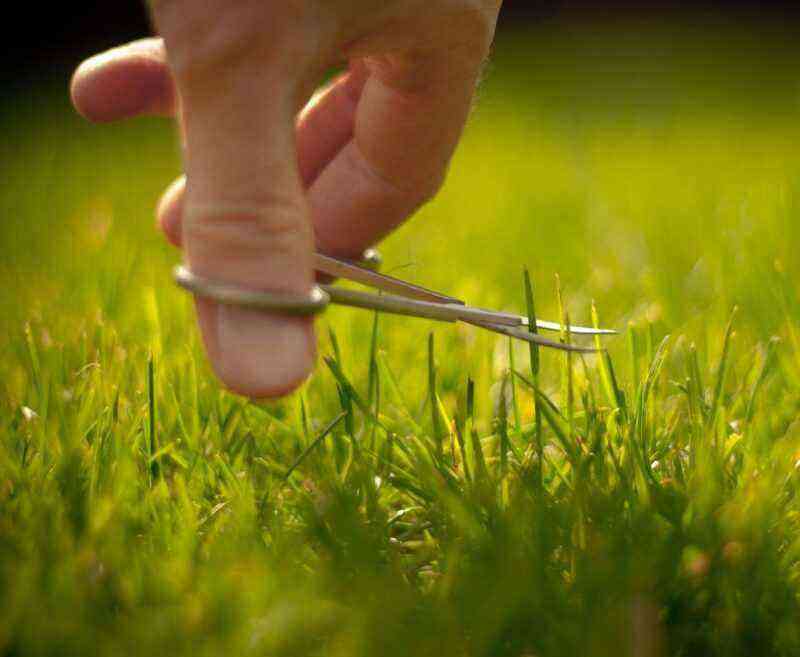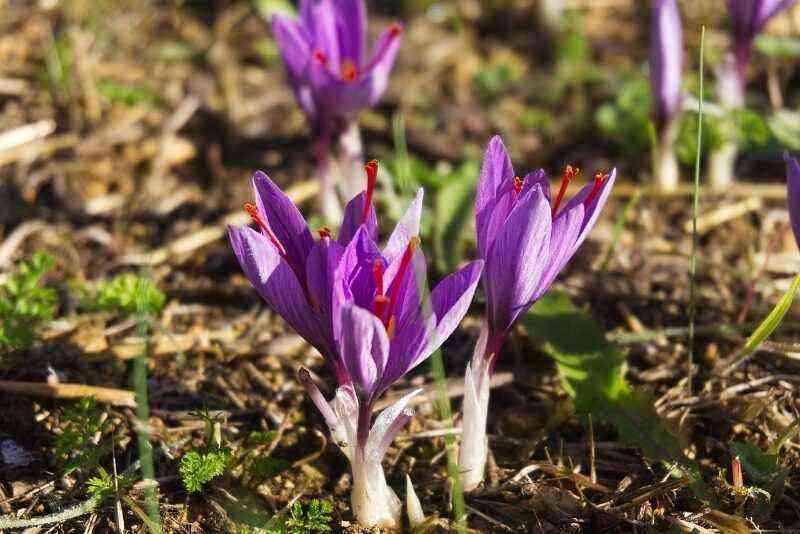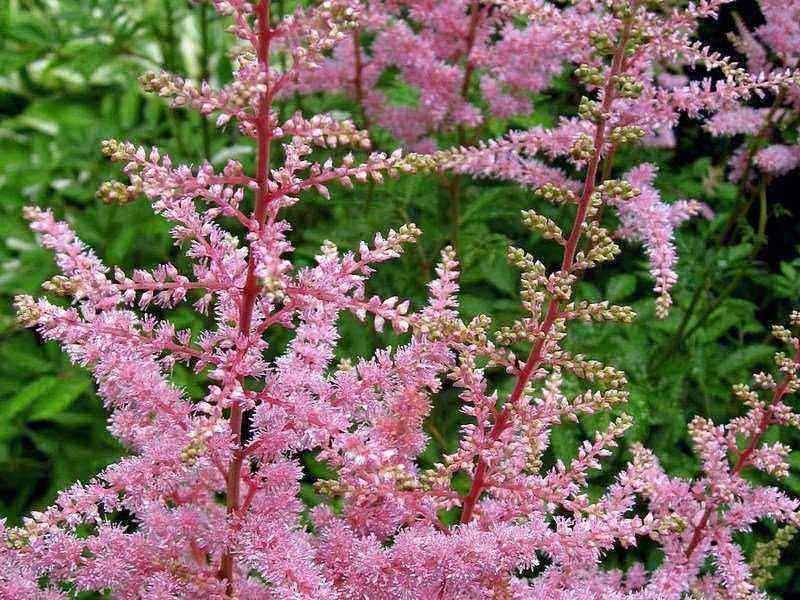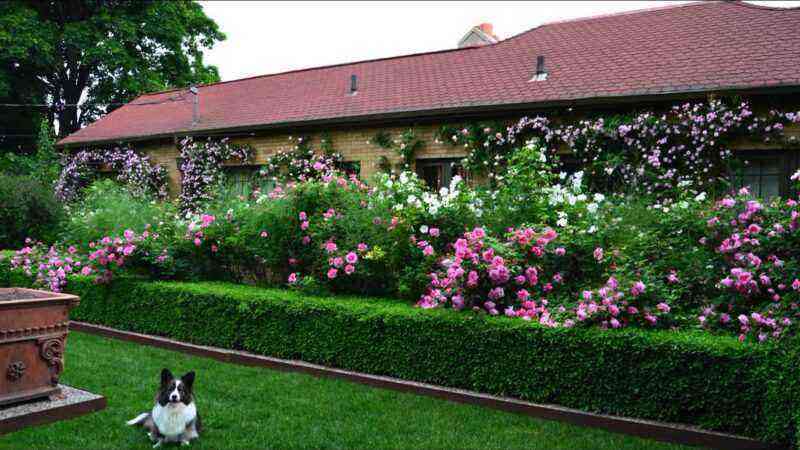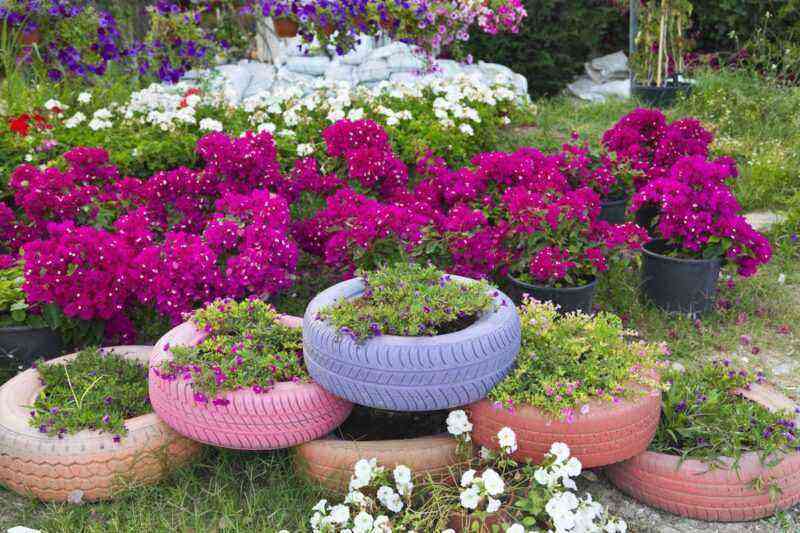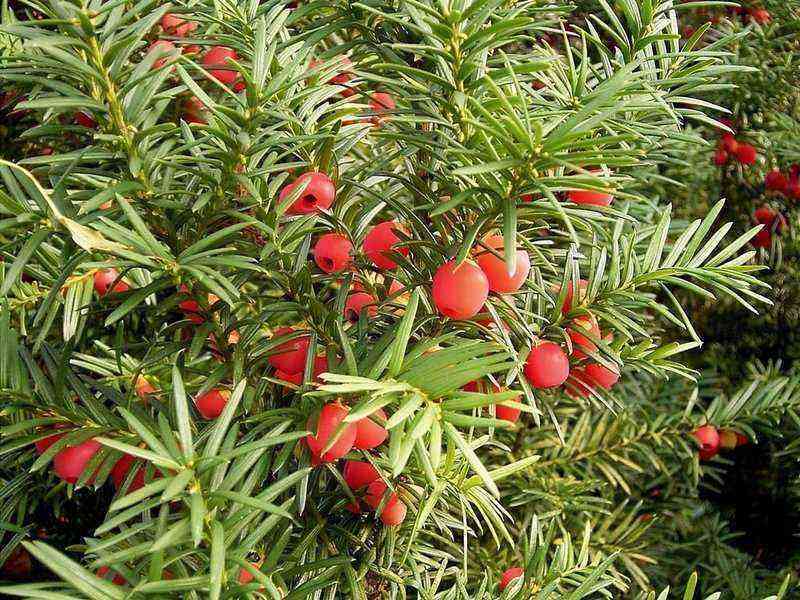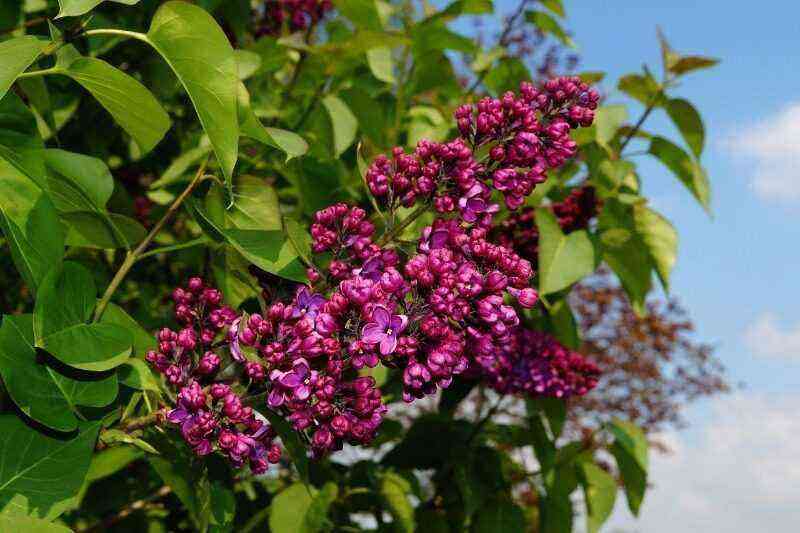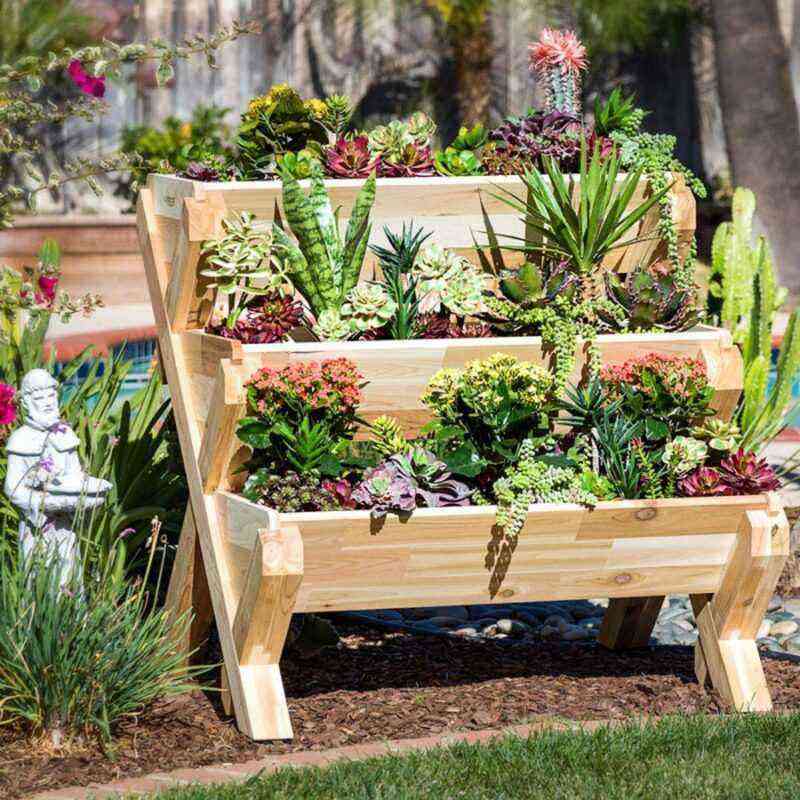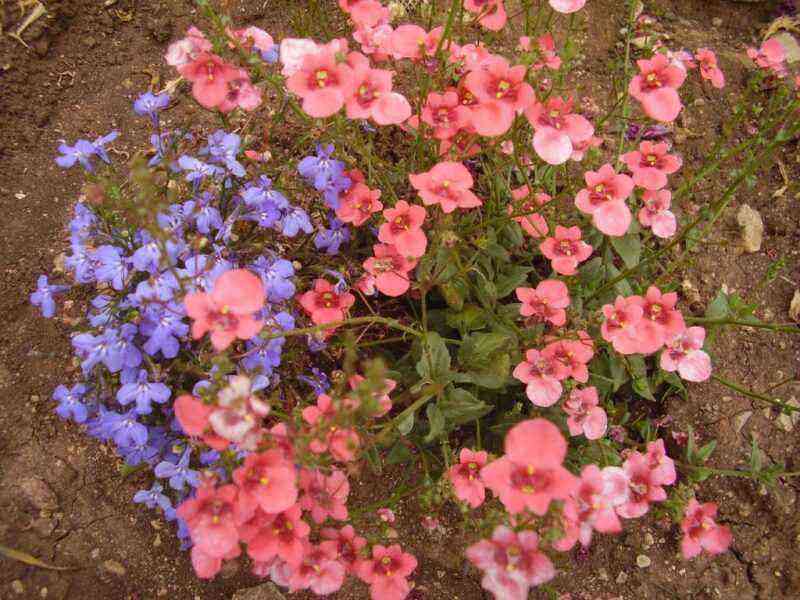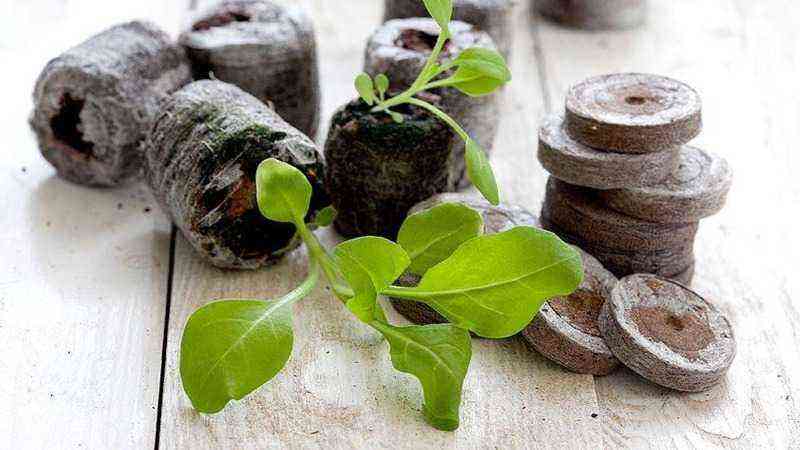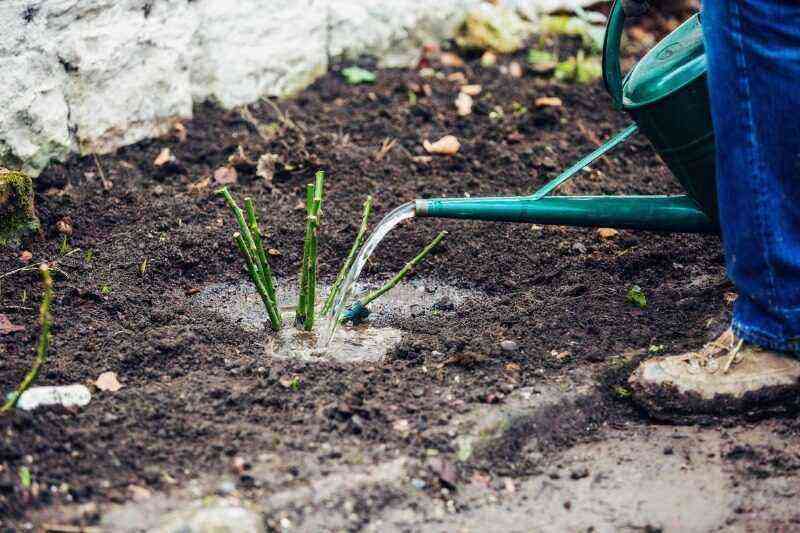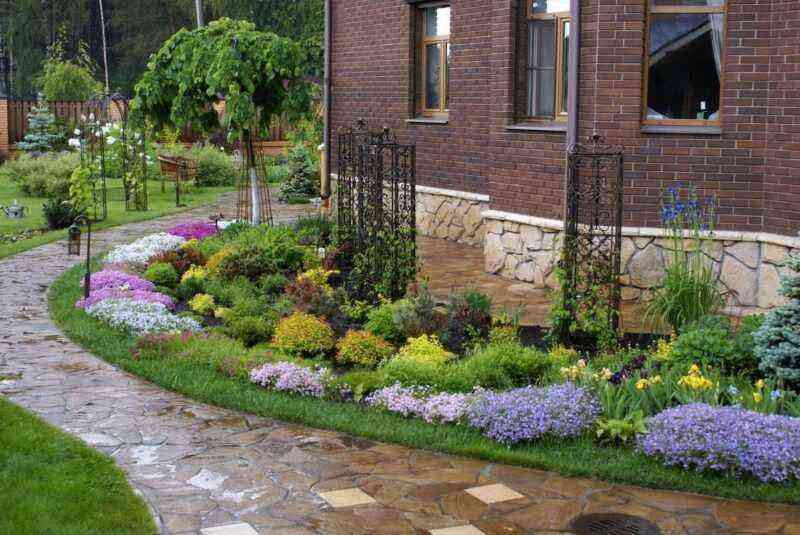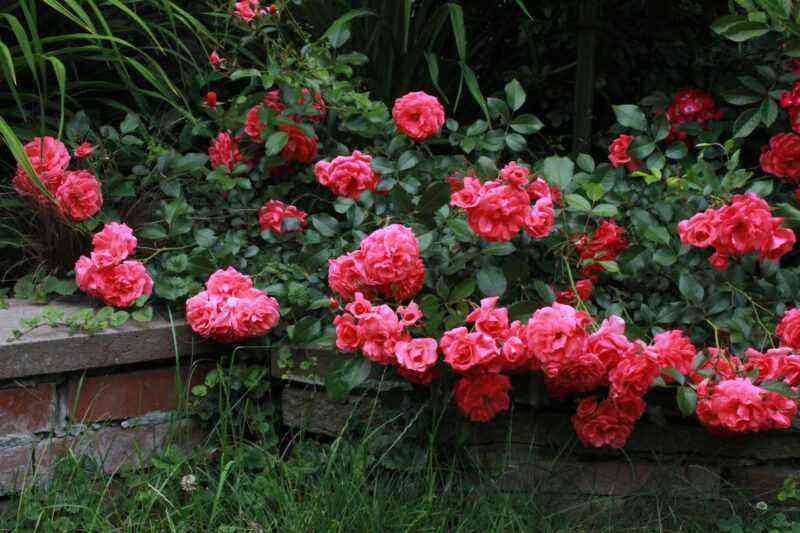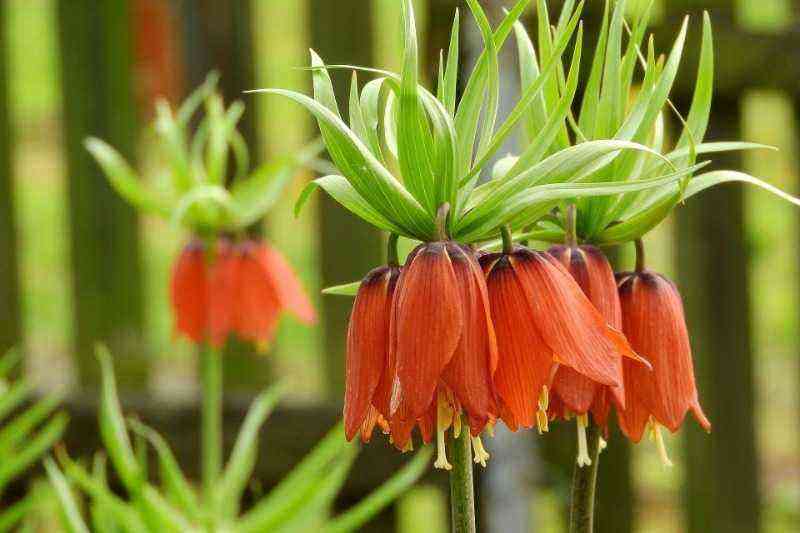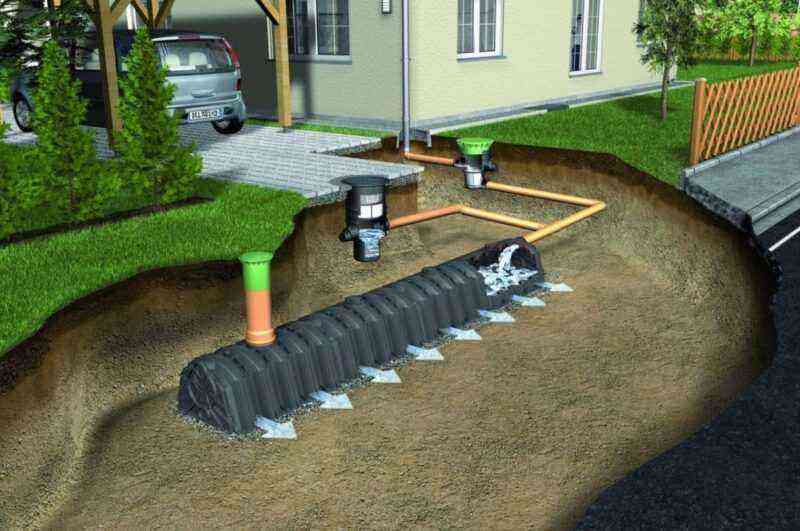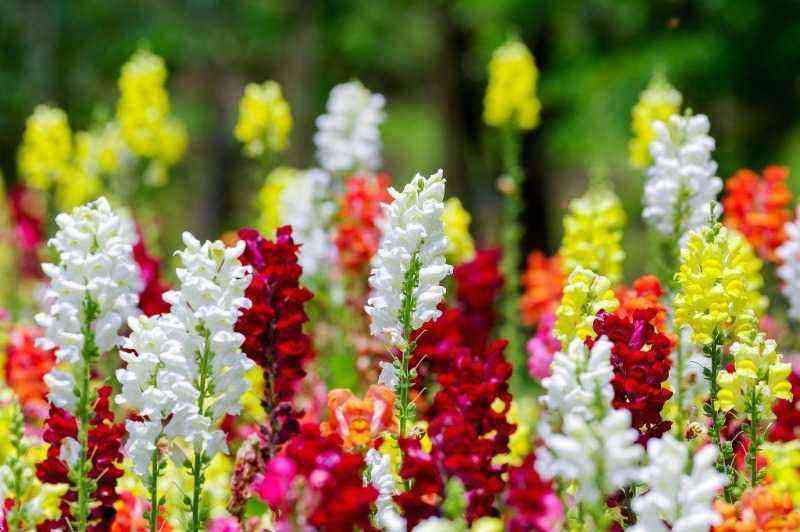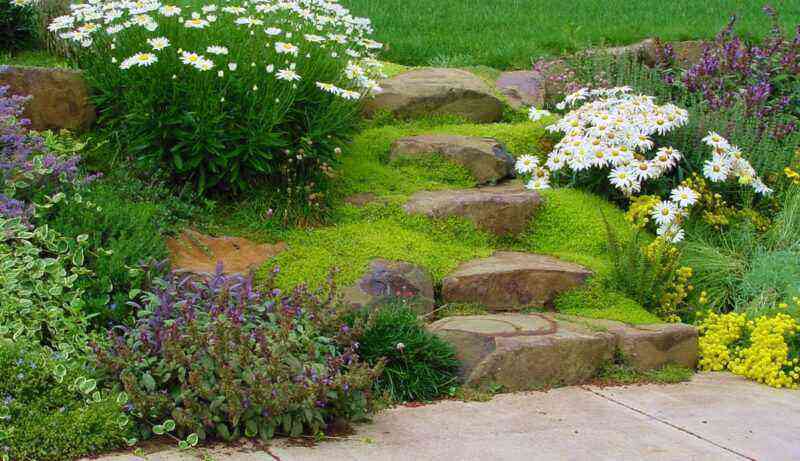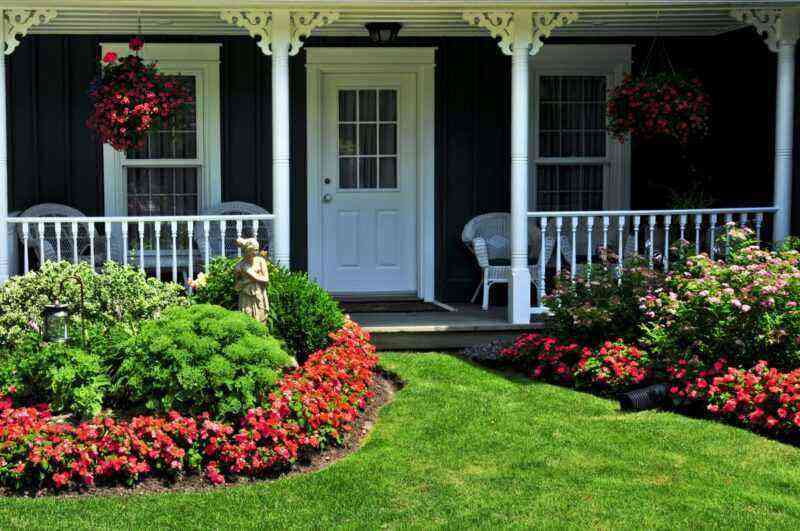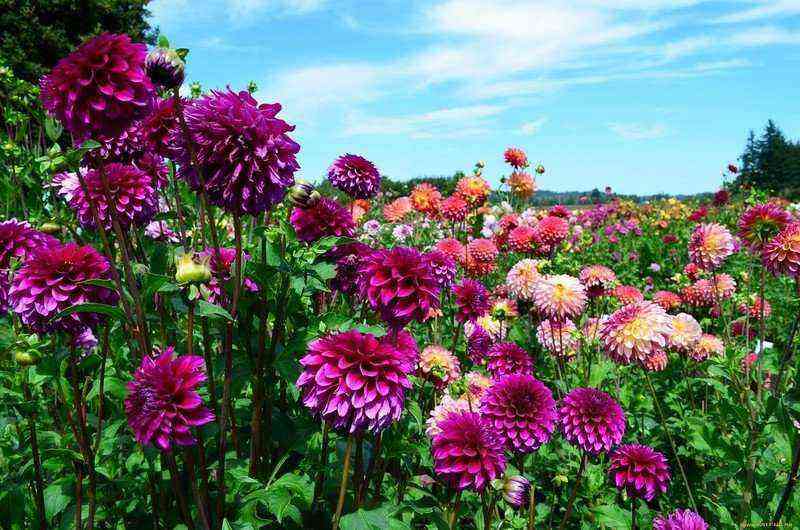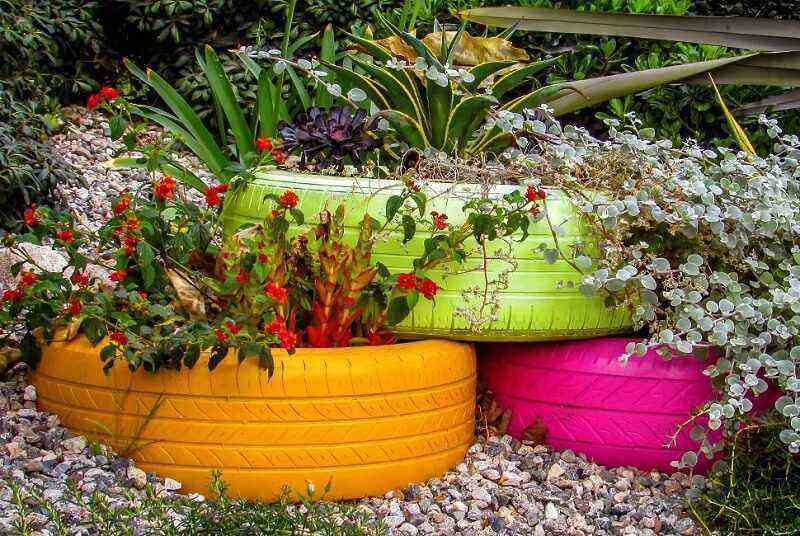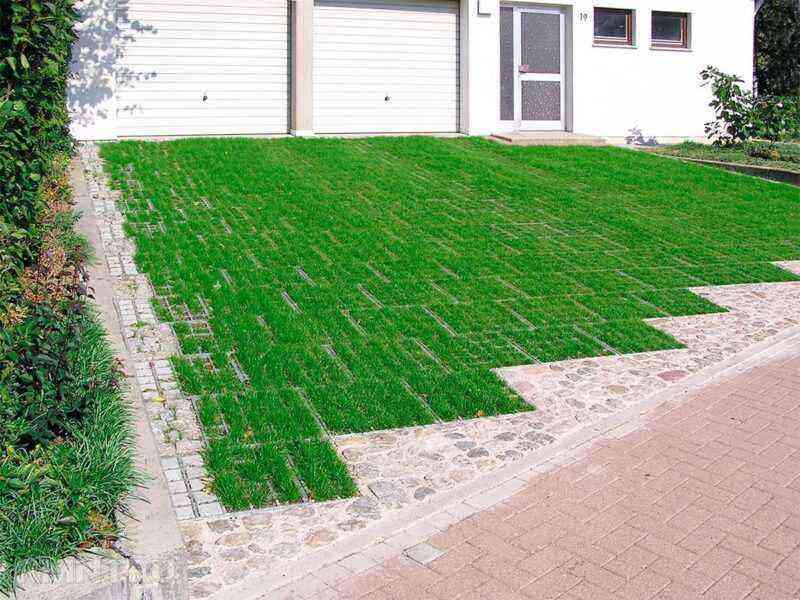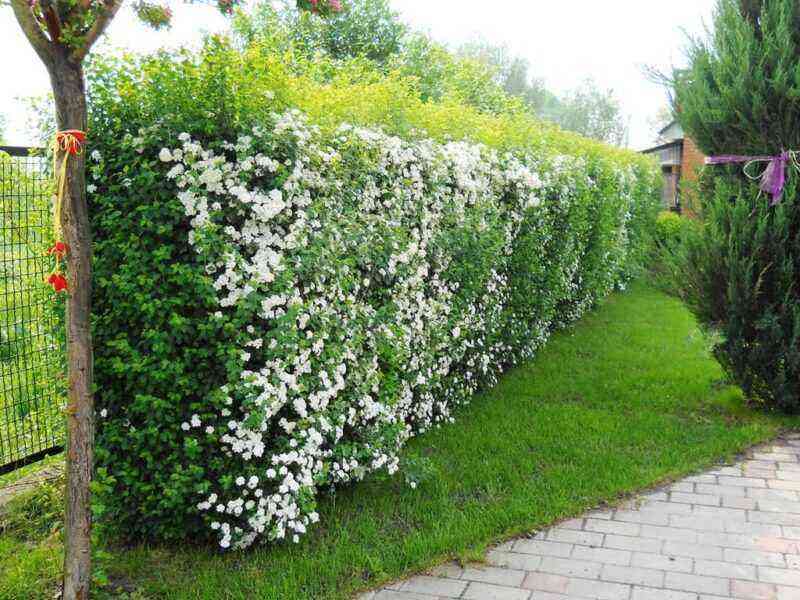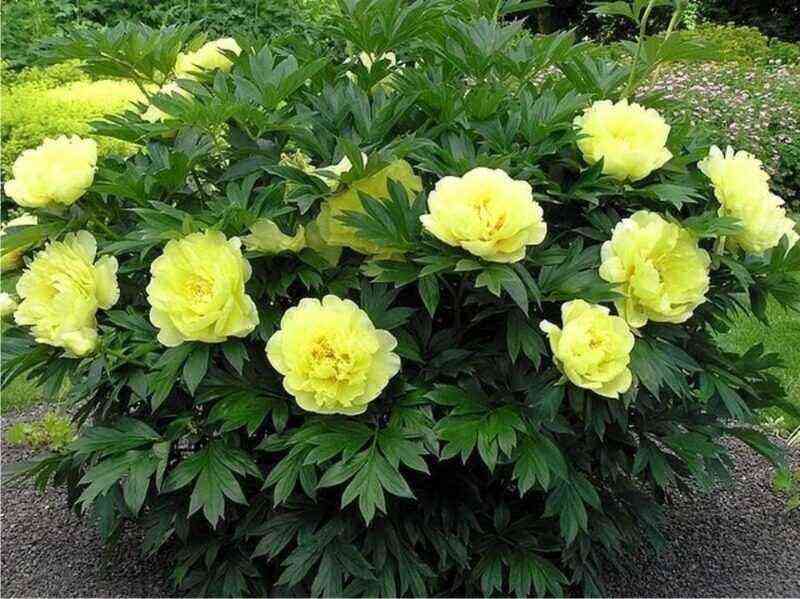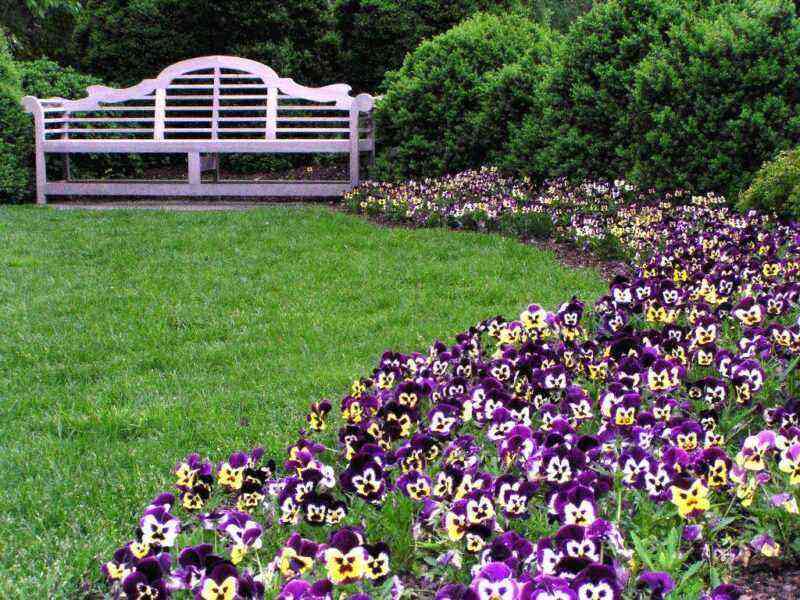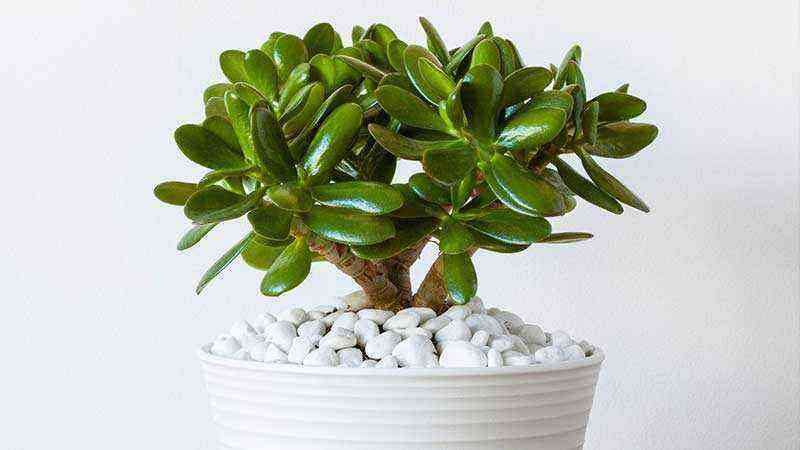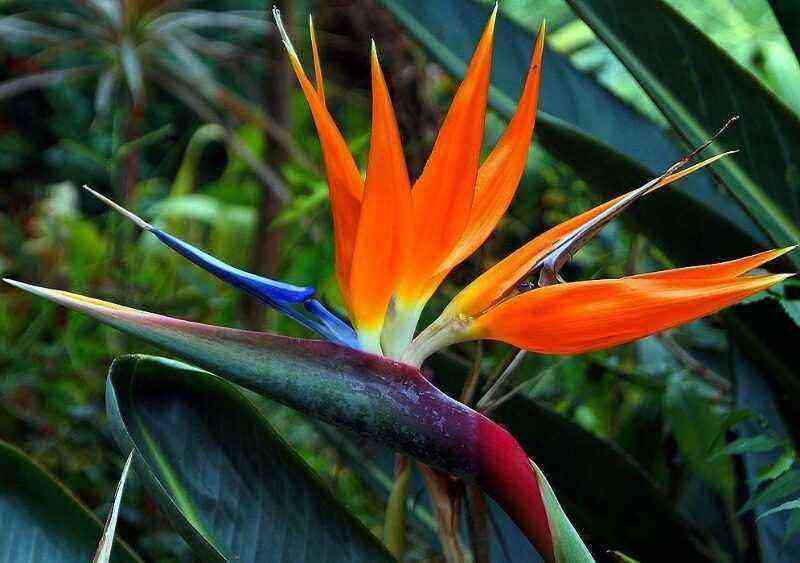In the creation of the original design of the garden plot, vertical gardening, as one of the types of plant and flower decoration, takes one of the leading roles. Competent selection of plants for vertical gardening will allow you to form a green mass, which will not only serve as a decoration for the facade, but also create the illusion of a green environment. This landscaping technique is widely used in landscape design for the design of small architectural garden forms: gazebos, pergolas, trellises, terraces, slopes, fences, stone walls, awnings …
Due to the variety of colors, shapes of climbing and climbing plants, colors and textures of their leaves, as well as the ability to easily give in to pruning and shaping, it is possible to implement a wide variety of design projects.

The main advantage of this method of landscaping is the ability to quickly and easily arrange large spaces in height and width with live plants.
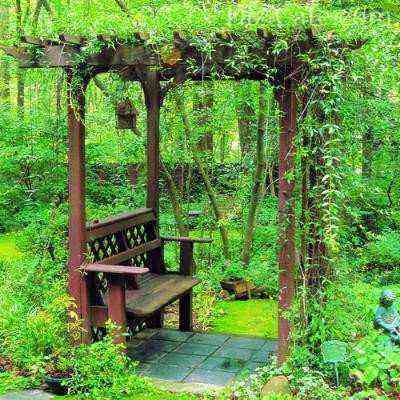
Thick foliage increases humidity and creates coolness, which is especially valuable during hot months
Some of the main advantages of this type of landscaping include:
- Maximum decorativeness in a small area. Vertical gardening is an affordable way of decorating buildings, structures and other unsightly utility rooms, as well as creating a unique memorable look of structures. Thanks to the use of climbing and climbing plants, it is possible to increase the green area several times while maintaining the size of the site.
- Easy to clean. Plants for vertical gardening are easy to care for: eliminating the need for weeding and mulching the soil, weed control.
- Thermal regulation. Plants act as a curtain of the building: by reflecting the thermal rays of the sun, they protect its walls from excessive heating. Climbing and climbing plants reduce the penetration of polluted air and dust into the room.
This allows vertical gardening plants to be used to create cozy corners in the garden, protected from the sun, noise and wind.
The main determining factor in the optimal choice of a plant for decorating the facade of a structure is the side of the world to which the object of landscaping is drawn.
For the northern walls of the building are perfect: maiden grapes, henomeles, ivy, camellia, mock orange, forsythia, elliptic harry, beautiful capuchin, horizontal cotoneaster.
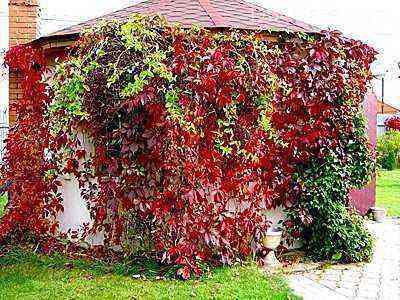
Easily rooted and picky to care for, maiden grapes are capable of braiding large enough surface areas in 1-2 years
On the southern walls, they will show themselves in all their glory: honeysuckle, clematis, wisteria, rhododendron, tseanotus, broom, kampsis, callistemon, climbing rose, Chinese schizandra, actinidia kolomikta.
They feel comfortable on the eastern side of the buildings: nasturtium, pyracantha, Japanese kerria, tree hydrangea, large-leaved tree-nose, as well as such favorites of the sun as maiden grapes, clematis, ivy, chaenomeles.
The western part of the wall can be decorated with: nightshade, hops, passion flower blue, grape-leaved rope, large-flowered magnolia, Californian carpenteria, as well as varieties of camellia, wisteria, chionanthus.
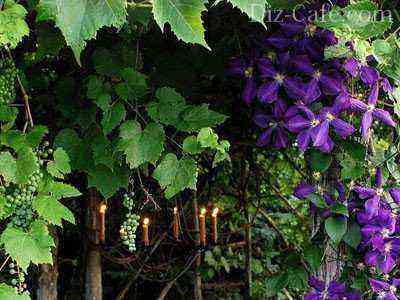
Scourges of clematis with luscious greens will add delicacy to any design, and chic flowers of the most incredible shades will delight you throughout the summer
If we take as a basis the design features that are planned to be originally decorated with living plants, then the following are ideal for decorating arches and pregolas: honeysuckle, clematis, curly nightshade, as well as various types of clematis, wisteria, and beauties of roses.
You can learn more about how to create a garden arch for flowers from the material:
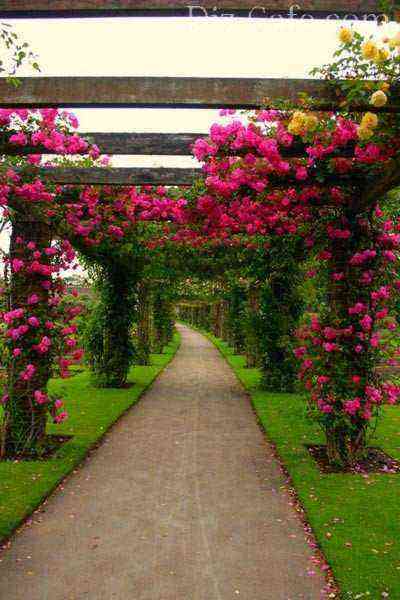
Roses are favorites in popularity among gardeners: curly varieties effectively decorate all kinds of arches and pergolas
To decorate trees, it will be very successful to use: Coigne grapes, clematis (Tagun and mountain), honeysuckle, scaly hydrangea.
For good development and abundant flowering, both climbing and climbing plants need fertile, slightly acidic soil.
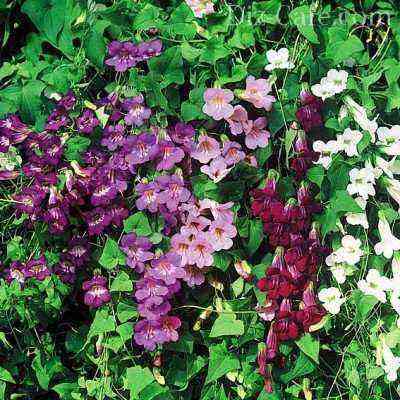
When decorating a structure, it is advisable to use only similar plant species in a small area, which will avoid excessive variegation of thickets and a chaotic picture, devoid of harmony
Flowers for vertical gardening are widely used in all European countries. All kinds of hanging baskets and pots, flower towers and vertical flower beds are very popular in big cities, where glass and concrete predominate and there is so little room for living plants. As a decorative design of the facades of buildings, small-flowered ampelous plants are especially effective, pleasing with lush abundant flowering.
The main decoration of hanging baskets, flowerpots and flowerpots is traditionally the annuals, distinguished by the duration and luxury of flowering. A worthy decoration of a flower garden can be: hybrid forms of petunias, lobelia, nasturtium, verbena, begonias and ivy-leaved pelargoniums.

When selecting and creating compositions from living plants for decorating architectural structures, one should take into account the peculiarities of building structures: plants, first of all, should emphasize the merits of the building, and not cover them
Using the technique of multilevel placement of flowering plants, creating many variations of compositions, you can get the effect of a continuous exuberant flowering.
